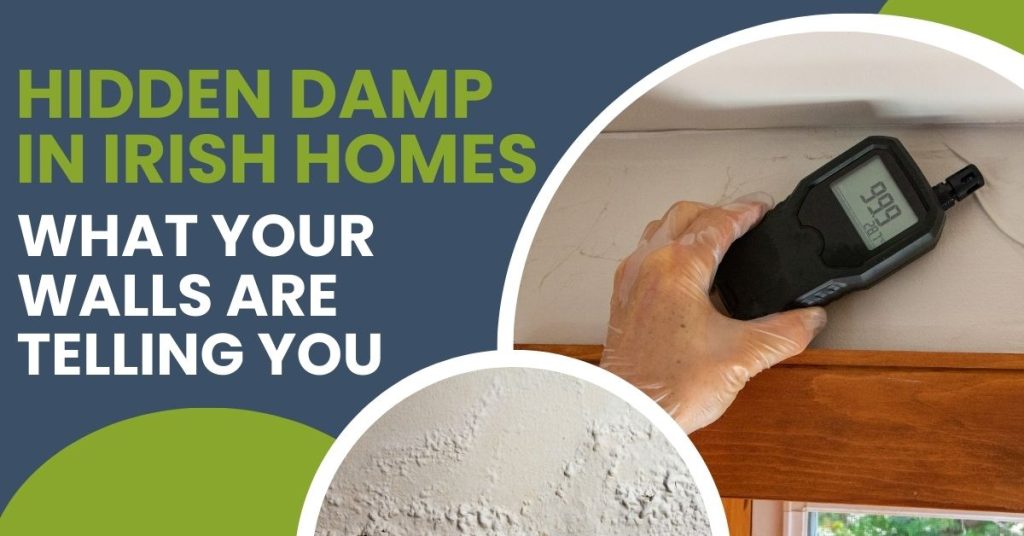
It might look like just another painted wall, but what lies beneath could tell a very different story.
In homes across Ireland, hidden damp is one of the most common, and costly, issues we uncover during surveys. From subtle staining to deboned plaster, these problems often go unnoticed until it’s too late. That’s where a qualified property surveyor steps in.
Here’s what to watch for, and why those little knocks on the wall could save you thousands.
What is hidden damp?
Hidden damp refers to moisture build-up within a wall or structure that isn’t immediately visible on the surface. It’s the kind of issue that doesn’t always show up as a dramatic patch of mould or flaking paint.
But it’s there, behind the skirting, inside the plasterwork, and often doing quiet damage over time.
What is debonded plaster?
One of the clearest signs of long-term damp is deboned plaster. This happens when moisture seeps into the wall and breaks down the bond between the plaster and the underlying block or brickwork.
The result?
A wall that sounds hollow when tapped, and may eventually start to crack, crumble, or even fall away entirely.
We often identify this during a survey using a moisture meter, tapping tools, or even just by sound. If the plaster’s gone soft and hollow, it’s time to investigate further.
What causes it?
In Irish homes, we often find hidden damp caused by:
- Leaking gutters or downpipes
- Poor ventilation
- Blocked cavity insulation
- Rising damp from below floor level
- Penetrating damp through damaged render or pointing
It doesn’t always take a flood or broken pipe to cause the problem, even mild water ingress over time can do the damage.
Why it matters
Damp isn’t just cosmetic. Left untreated, it can lead to:
- Rotting timber
- Mould growth
- Health issues
- Structural damage
And if it goes deep enough, repairing it may involve removing floors, internal walls, or major remedial work.
Can you spot it yourself?
Not always. While musty smells, discolouration, or flaking paint are classic signs, many cases of damp go completely unnoticed until a proper survey is carried out.
That’s why our team of qualified property surveyors uses specialised tools and years of experience to assess homes thoroughly, especially in areas like:
- Older properties
- Homes that have recently been renovated
- Ground floor walls
- Areas near external downpipes or chimney breasts
Real example: Tom’s “damp beat” wall
During a recent home survey in Ireland, our surveyor Tom gave a wall a quick knock, and instantly heard a telltale hollow thud.
That’s not a quirky building feature. It was a clear sign of deboned plaster, caused by excessive damp on the wall over time. What looks like a smooth surface could actually be a weak, moisture-ridden layer that needs stripping and replacing.
These are the kinds of hidden issues we check for every day.
Buying a home? Don’t skip the survey
Whether it’s your first home or your forever home, getting a professional property survey is one of the smartest moves you can make.
We’ll uncover:
- Hidden damp
- Structural red flags
- Drainage issues
- Pest damage and more
So you can move forward with peace of mind, or negotiate based on real findings.
Book your survey today at iSurv.ie and make sure your dream home doesn’t come with damp surprises.
